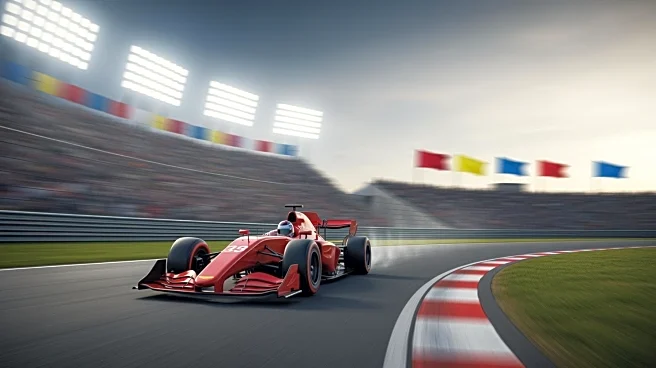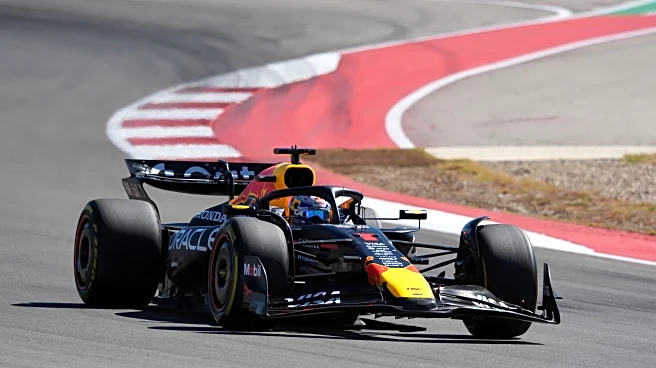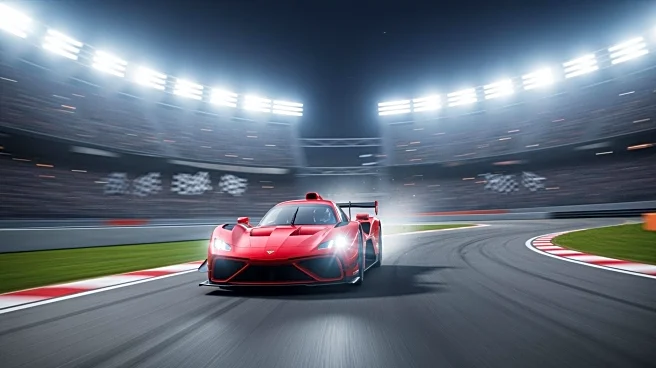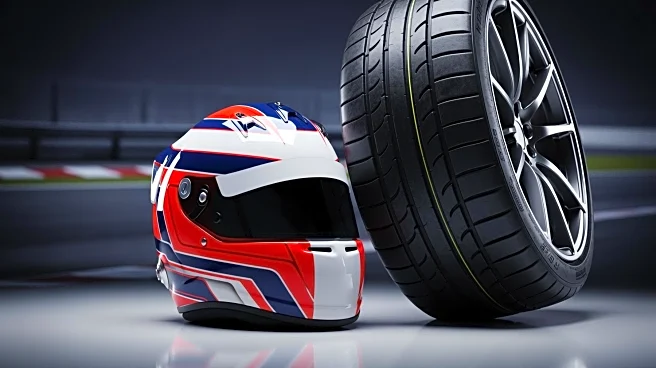What's Happening?
Charles Leclerc achieved a podium finish at the United States Grand Prix, securing third place behind Max Verstappen and Lando Norris. Leclerc's performance was marked by a strategic decision to start
on soft tires, which initially gave him an advantage over Norris. Despite losing second place to Norris in the final laps, Leclerc expressed satisfaction with the race, highlighting the effectiveness of his team's strategy. The race was characterized by intense competition, with Leclerc holding off Norris for a significant portion before Norris managed to overtake him. The event also saw Max Verstappen extend his lead, further intensifying the championship race.
Why It's Important?
Leclerc's podium finish is significant for Ferrari, providing a morale boost after a challenging period. The strategic choice to start on soft tires demonstrates Ferrari's willingness to take calculated risks to improve their standing in the championship. This result impacts the ongoing battle for the Formula 1 drivers' title, with Verstappen closing the gap on McLaren's Oscar Piastri. The race highlights the competitive dynamics between top teams like Ferrari, McLaren, and Red Bull, influencing team strategies and driver standings as the season progresses.
What's Next?
The outcome of the United States Grand Prix sets the stage for the remaining races in the season, with teams likely to reassess their strategies based on the performance insights gained. Ferrari may continue to explore aggressive strategies to maximize their points, while McLaren and Red Bull will focus on maintaining their competitive edge. The championship race remains open, with drivers and teams preparing for the next Grand Prix, where strategic decisions will be crucial in determining the final standings.
Beyond the Headlines
The strategic decisions made during the United States Grand Prix reflect broader trends in Formula 1, where teams increasingly rely on data-driven approaches to optimize performance. The race underscores the importance of tire management and pit stop strategies, which can significantly influence race outcomes. As teams continue to innovate, the competitive landscape of Formula 1 evolves, with technology playing a pivotal role in shaping race strategies and driver performance.












